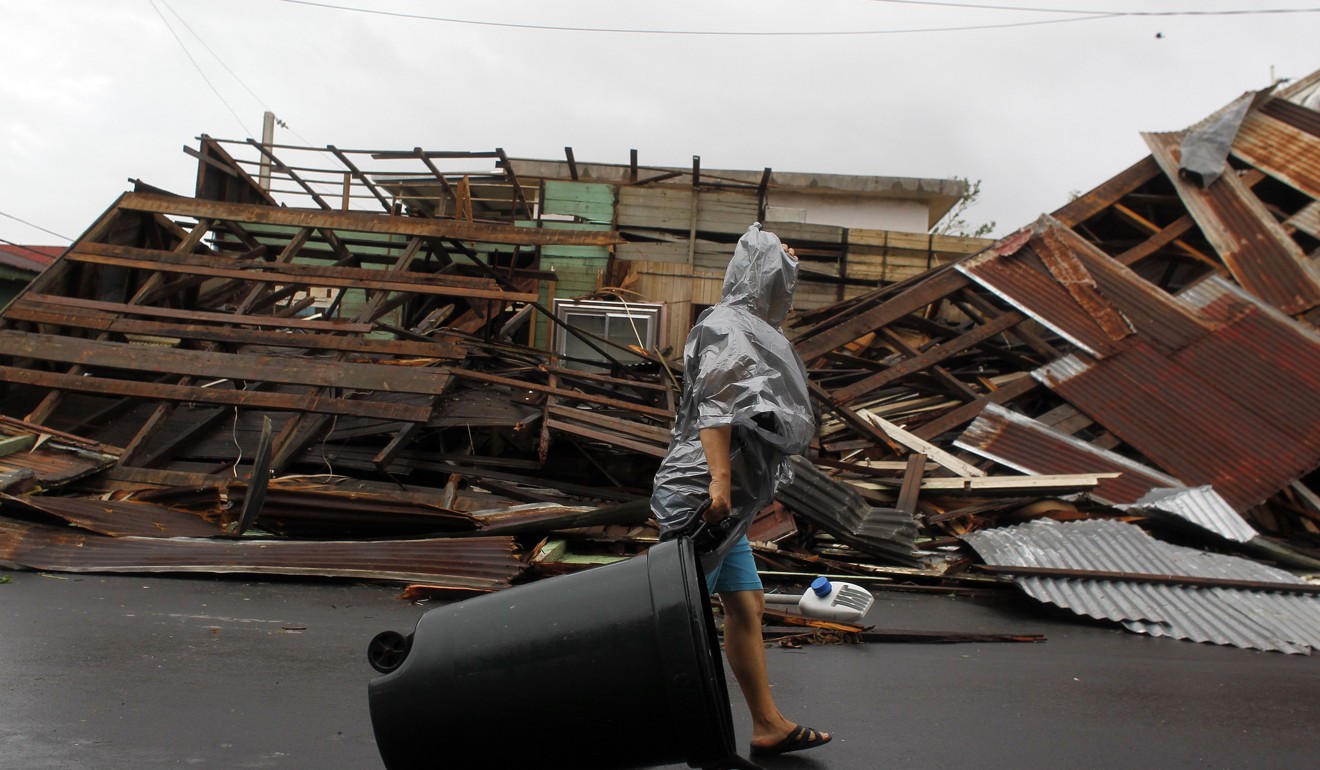
Hurricane Maria blacks out all of Puerto Rico and destroys hundreds of homes
Worst storm in 80 years savages island with 250km/h winds
The strongest hurricane to hit Puerto Rico in over 80 years destroyed hundreds of homes, knocked out power across the entire island and triggered heavy flooding on Wednesday in an onslaught that could plunge the US territory deeper into financial crisis.
Leaving at least nine people dead in its wake across the Caribbean, Hurricane Maria blew ashore in the morning in the southeast coastal town of Yabucoa as a Category 4 storm with winds of 250km/h. It was expected to punish the island of 3.4 million people with life-threatening winds for 12 to 24 hours.
“Once we’re able to go outside, we’re going to find our island destroyed,” said Abner Gomez, Puerto Rico’s emergency management director. “The information we have received is not encouraging. It’s a system that has destroyed everything in its path.”
It was the second time in two weeks that Puerto Rico felt the wrath of a hurricane.
There was no immediate word of any deaths or serious injuries.
As people waited it out in shelters or took cover inside stairwells, bathrooms and closets, Maria brought down cell towers and power lines, snapped trees, tore off roofs and unloaded at least 20 inches (50 centimetres) of rain.
Widespread flooding was reported, with dozens of cars half-submerged in some neighbourhoods and many streets turned into rivers. People calling local radio stations reported that doors were being torn off their hinges and a water tank flew away.
Felix Delgado, mayor of the northern coastal city of Catano, said that 80 per cent of the 454 homes in a neighbourhood known as Juana Matos were destroyed. The fishing community on San Juan Bay was hit with a storm surge of more than 4 feet, he said.
“Months and months and months and months are going to pass before we can recover from this,” he said.

Late on Wednesday, Maria had weakened to a Category 3 storm with winds of 115mph (185kph). Its centre was just off Puerto Rico’s northwestern coast, moving at about 15mph (20kph). It was expected to pass off the coast of the Dominican Republic late on Wednesday and Thursday.
Even before the storm, Puerto Rico’s electrical grid was crumbling and the island was in dire condition financially.
Puerto Rico is struggling to restructure a portion of its US$73 billion debt, and the government has warned it is running out of money as it fights back against furloughs and other austerity measures imposed by a federal board overseeing the island’s finances.
“This is going to be a disaster,” said Jean Robert Auguste, who owns two French restaurants and sought shelter at a San Juan hotel. “We haven’t made any money this month.”
More than 11,000 people and more than 580 pets were in shelters, authorities said.
Along the island’s northern coast, an emergency medical station in the town of Arecibo lost its roof, while communication was severed with several emergency management posts. A hospital and a police station reported broken windows, and a tree fell on an ambulance.
As the storm closed in on the Dominican Republic, about 4,000 tourists in the Bavara-Punta Cana area on the eastern tip of the island were moved to hotels in Santo Domingo, the capital.
Maria posed no immediate threat to the US mainland. The long-range forecast showed the storm out in the Atlantic Ocean hundreds of miles off the Georgia-South Carolina coast by Monday morning.
Previously a Category 5 with 175mph (281kph) winds, Maria hit Puerto Rico as the third-strongest storm to make landfall in the US, based on its central pressure. It was even stronger than Hurricane Irma when that storm roared into the Florida Keys earlier this month.
The last Category 4 hurricane to blow ashore in Puerto Rico was in 1932, and the strongest ever to hit the island was San Felipe in 1928 with winds of 160mph (250kph).
On the island of Dominica, which got slammed late Monday, Hartley Henry, an adviser to the prime minister, reported at least seven deaths and a “tremendous loss of housing and public buildings.” He said the country was “in a daze,” with no electricity and little to no communications.
Dominica’s airport and seaports remained closed, and authorities used helicopters to carry emergency food, water and shelter materials to the island, said Ronald Jackson, head of the Caribbean Disaster and Emergency Management Agency.

